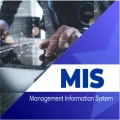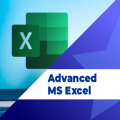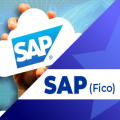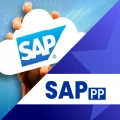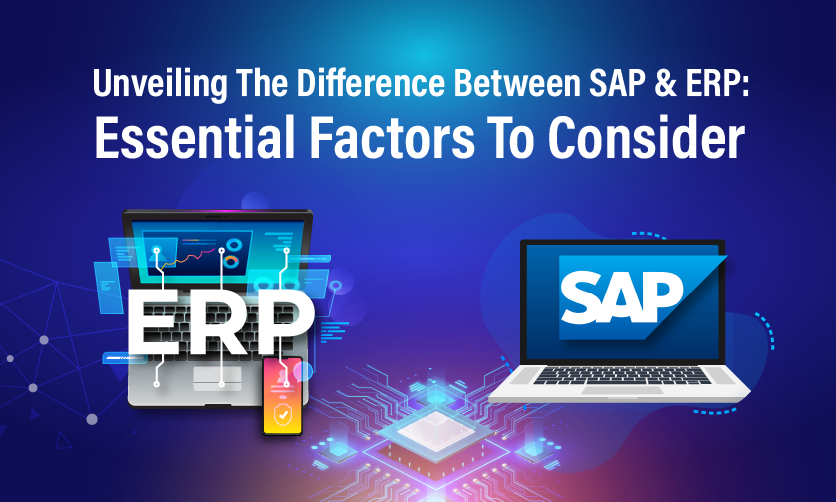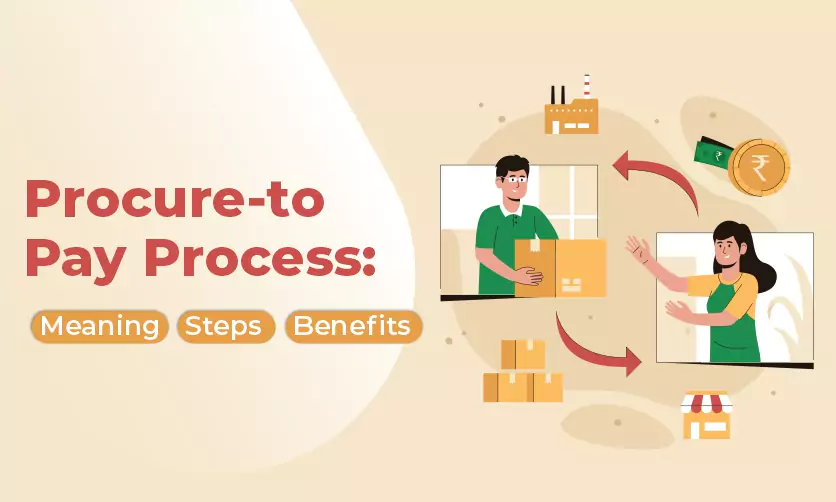
Procure-to-Pay Process: Meaning, Steps, Benefits Explained
In today’s fast-growing digital world, businesses have to work smartly to save time and money. Businesses that genuinely want to grow with this technique have to make their operations easy, from buying stuff to making payments with the help of the procure-to-pay process.
Ready to dive into the world of the P2P process? Great! This guide will explain the basics of the procure-to-pay process, its implementation steps, flow chart, benefits, and more. All these will help you run your business with ease.
Let’s start first by understanding what the procure-to-pay process means.
Table of Contents
What is the Procure-to-Pay Process?
To make this easy to understand, we will explain it with an example. Let us consider a new business that has started; and needs new office supplies like paper clips, printers, and many more things. Now the operational manager has an idea about the P2P process.
See how the Procure-to-Pay process helps businesses. To understand the business needs (like recognizing a need), to identify the best deal (identifying resources), to place the order (securing them), and to pay the order amount (settling the bill).
The complete process is interconnected, by creating a bridge between procurement and finance. It ensures that the whole process is complete with better efficiency and transparency, with no hassle of checking where the money went.
The P2P process saves lots of time and money, and ultimately, it improves business efficiency. Organizations acquire the resources they need, the way they need them, without compromising accuracy, efficiency, or financial control.
Procure-to-Pay Process Flow Chart
The procure-to-pay process follows a definitive path to complete the business’s needs. Let’s visualize the flow diagram of each step for successful execution:
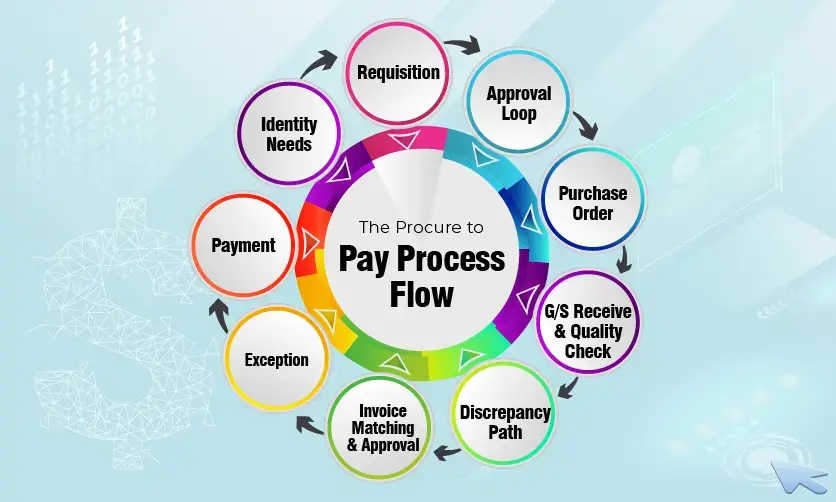
- Start Point: First, identify the needs of the business in terms of goods or services.
- Requisition: Moving by placing an order, where employees submit a formal request.
- Approval Loop: After placing the order, it’s time to check whether it is accepted or rejected.
- Purchase Order (PO): If your order is successfully accepted, then it is transferred to the purchase order desk
Goods/Services Receive & Quality Check: After receiving the placed order, it is transferred for the quality check so that it meets the standards. - Discrepancy Path: If the product meets the expected standards, then it is accepted. if it fails the quality check, then move into the rejected order.
- Invoice Matching & Approval: Once the order meets the quality check, the supplier invoice is cross-checked with the purchase order invoice to avoid any mismatch
- Discrepancy Path: If the invoice is not matched, then the order is rejected.
- Payment: If the invoice matches, then payment is processed with a relevant method like EFT.
- Account Update: Once the payment is done, update the accounting records to reflect the expense.
End Point: Finally, connect the Account Update box to “End.”
I hope now you have some idea of how the pay process works in real cases. Before diving into a detailed explanation of the step-by-step P2P process. Read some informative articles on SAP-FICO to improve your knowledge base.
Hopefully, you have gone through the articles; if not, then check them later on. Meanwhile, explore the next section of the article, which is the procure-to-pay process steps.
Procure-to-Pay Process Steps
In the above section, we have explained the basics of the p2p process workflow with a diagram. Now you can visualize its steps easily
Step 1: Demand Recognition
- The first step is where the company identifies its needs. It means what their requirement are for running a business. For example, it may need new computers or some other stationary items.
- Businesses must be clear in this stage with the quantity, quality, features, budget, and delivery timelines of the products.
Step 2: Vendor Selection
- In this stage, the potential suppliers are identified who can fulfill the demand as per the company’s needs in terms of quality, quantity, features, and more. In addition to that, other factors are also considered, like delivery capabilities, customer service reputation, and environmental practices.
- After finding satisfactory suppliers, depending on the situation of the purchase, sometimes businesses request detailed proposals or even conduct site visits.
Step 3: Purchase Order Issuance
- Once the vendor is selected, a purchase order is generated. This document consists of all the important details related to the placed order, like descriptions of the goods or services, prices, quantities, delivery schedules, payment terms, and any other relevant details.
- The PO acts as an official record between the buyer and seller that clearly states the agreement terms between both parties.
Step 4: Goods/Services Receipt
- The most important step is where the received goods are checked in terms of quality, functionality, and quantity. Businesses ensure that all the details match with the purchase order.
- Any discrepancies found will be immediately noted and documented with the supplier before accepting the delivery.
Step 5: Invoice Verification and Approval
- While receiving the goods, the supplier also sent an invoice for the order. It is ensured by the company that it matches the purchase order. If any error is noticed, then it must be resolved before the invoice is approved for payment.
- Depending on the organization’s approval process, this might involve multiple levels of review and authorization.
Step 6: Payment Execution
- After verifying all the above steps, it’s time to complete the payment to the supplier. Based on the terms of the agreement between the buyer and supplier, payment is made.
- Businesses try to make the payment within the mentioned time limit to maintain good relationships with suppliers.
Step 7: Record Maintenance
- All documentation related to the procurement process should be systematically filed and stored. This includes the PO, invoice, receipts, inspection reports, and any other relevant communication.
- Maintaining accurate records is essential for tracking expenses, auditing purposes, and future reference.
Looking to embrace your SAP-FICO knowledge but have no idea where to start? Don’t worry; ICA has designed the course under expert guidance. Just explore the courses here

Let’s continue our discussion on the procure-to-pay process. Now, we are going to explain the different software that businesses can use to complete the P2P process.
Procure-to-Pay Process Software
With the evolution of technology, businesses also want to grow with it. To fulfill business needs, the software is also designed to uplift the traditional P2P process. Now, with the help of different software, companies can easily streamline the procure-to-pay process.
We have mentioned software that will help you complete the procure-to-pay process task easily.
SAP Ariba:
SAP Ariba is a cloud-powered procurement software designed to meet the needs of businesses that look for automation in the P2P process. It helps you automate tasks like requisitioning and approvals. Even the software can help you to get real-time analytics on your spending.
Coupa:
Coupa is famous for its user-friendly interface, which makes the procurement process easy. Coupa simplifies everything, from requesting office supplies to managing complex contracts. It ultimately improves the efficiency of the P2P process in comparison to the traditional procurement platform.
Oracle Procurement Cloud:
Consider it as a one-stop solution for all your procurement needs that is available to you 24/7. Oracle Procurement Cloud allows you to do everything from sourcing and contracting to supplier management and invoice processing.
Basware Procurement:
The last one is Basware procurement, which completely automates the procure-to-pay process. It helps you with automatic data capture, three-way matching to eliminate invoice errors, and AI-powered workflows that keep things moving smoothly.
We have mentioned a few, but, there are many options available on the market that you can choose according to your business needs.
If you are looking to read some informative articles on SAP-FICO, check them out here
Benefits of the Procure-to-Pay Process
Businesses can leverage many benefits after using the procure-pay process. Here, we have explained how it can help you:
- Cost Savings
Now the process reduces the manual paperwork by automating the task with software. It reduces the labor cost and even the paper cost. Ultimately, businesses can save expenses on these. - Improved Accuracy
After using software, it reduces manual errors in calculation, and invoice generation, such as wrong entries. The accuracy of the P2P process improves the software double-check. Everything, and saving you from costly mistakes. - Enhanced Visibility
Businesses can track the real-time data of the entire P2P process. Now, organizations can monitor each step closely and make informed decisions to optimize the procure-to-pay process. - Streamlined Collaboration
The P2P process streamlined the tasks of all departments, from purchasing to accounts payable, on a single page. It boosts the collaboration among them. Thus, it improves the productivity of the business. - Compliance Adherence
The P2P process ensures that everything aligns with compliance and follows the mentioned rules. No more scrambling to meet deadlines or worrying about audits – the process keeps you compliant, ethical, and worry-free.
Every process faces a few challenges in its journey, and the same is true with the procure-to-pay process. Read the next section to be updated on the P2P challenges that may occur in your businesses.
Challenges in Procure-to-Pay Process
Data Security Concerns:
- In the process of making the task easy, there is always a concern about data security. Yes, the digital P2P process improves efficiency and accuracy, but data security can feel like a constant battle. There are many pieces of information are added to the software during the p2p process, like purchase orders, invoices, and supplier details. All these require multi-layered encryption, robust access controls, and vigilant threat detection to keep your data safe from cyber-attacks.
Resistance to Change:
- In every organization, few employees stick with the traditional process. If you want to implement the new procure-to-pay process, then proactive communication, training programs, and highlighting the benefits of the new P2P process can help.
Supplier Relationship Management:
- If businesses truly want to grow with the digital edge, then it is also necessary to maintain a good relationship with suppliers. Proper communication, timely payments, and feedback can add value to your P2P process. The more you create a sense of trust in your supplier, the more freely you can grow.
Integration Issues:
- Migrating from the old p2p process to the new one can feel like a hectic task. But with proper planning, testing, and involvement of all the stakeholders in a single frame, we can ensure smooth, seamless integration
Dominating the Future: Become a SAP Master |
|||
| SAP Certification Courses | |||
| Explore All SAP Courses SAP FICO Course | SAP MM Course | SAP PP Course | SAP SD Course |
|||
Best Practices for Procure-to-Pay Process
- Invest in Technology: Investing in procure-to-pay process software ensures improved automation and efficiency.
- Robust Supplier Onboarding: Smooth supplier onboarding promotes collaboration and business growth.
Regular Audits: Try to do regular auditing of the p2p process. It ensures that the process runs smoothly without any errors. - Cross-Departmental Collaboration: The P2P process promotes collaboration between procurement, finance, and other relevant departments and ensures a holistic approach.
- Continuous Improvement: To stay ahead of your competitors and at the top of the industry, try to implement a culture of continuous process improvement.
Conclusion
The Procure-to-Pay process catalyzes organizational growth. By adopting a strategic approach, best practices, and cutting-edge software, embrace your p2p process journey. Not limited to that, businesses can stay one step ahead of others and potentially grow better.
Still, if you are stuck in the old p2p process, you must adopt new, advanced technologies for seamless operations.
- 50 Important Cash Book Questions & Answers For Interview Preparation - January 5, 2026
- Job Oriented Courses For Commerce Graduates: Essential Things To Know - December 26, 2025
- 50 Important Depreciation Questions & Answers For Interview - December 19, 2025

.jpg)



